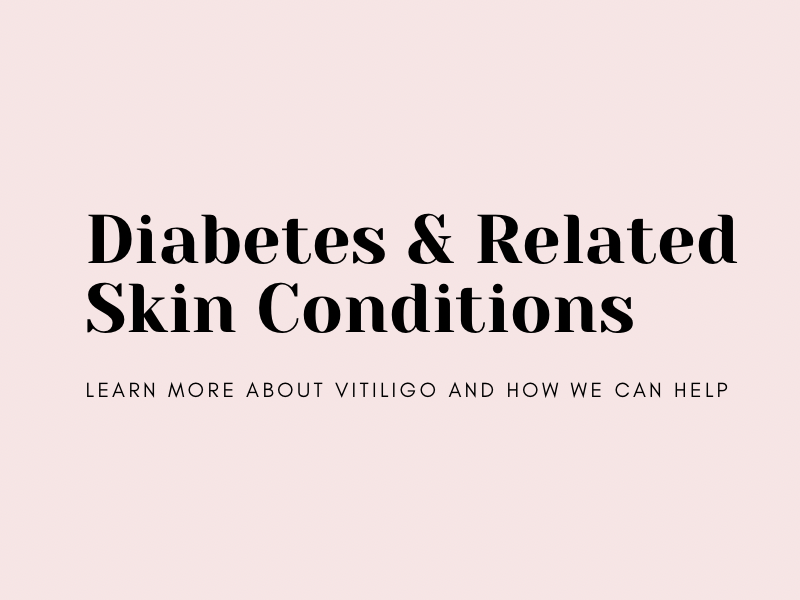Diabetes is a condition that affects the way the body uses glucose (sugar). We get glucose (sugar) from the carbohydrates we eat which are then transferred into energy. Diabetes affects insulin, a hormone produced to help glucose be processed from the bloodstream to the body itself for energy.
There are two types of diabetes, type 1 and type 2. Type 1 diabetes is an autoimmune condition causing the body to not produce insulin. The onset of type 1 diabetes is typically during childhood or adolescence. Type 2 diabetes is from increased glucose (sugar) levels in the body over time which leads to inefficient use of insulin, or insulin resistance. The onset of type 2 diabetes is typically in adulthood and the risk increases with obesity. Both types of diabetes increase risk for eye complications, kidney disease, high blood pressure, neuropathy and can even cause skin complications.
There are many skin conditions that can be indicators of pre-diabetes or related to an existing diagnosis of diabetes.
Acanthosis nigricans: This is a brown/black velvety thickening of the skin on the nape of the neck, armpits, or groin indicating elevated blood glucose levels. This is often a sign of pre-diabetes.
Skin infections: Diabetes decreases the ability of the immune system to fight infections. Therefore, frequent and recurrent skin infections can be an indication of uncontrolled diabetes.
Skin tags: Many people without diabetes may also have skin tags but an abundance of tags can be an indication of underlying diabetes.
Extremely dry/itchy skin
Necrobiosis lipoidica: This causes swollen, red, hard patches of itchy skin on the shins. This condition can come and go.
Blisters: Blisters on the skin can occur spontaneously in patients with diabetes.
Wounds and open sores: Over time diabetes can cause decreased blood flow and nerve damage. This makes it more difficult for the body to heal.
Diabetic dermopathy: This causes brown lines and dots mostly on the shins in diabetic patients.
Xanthelasmas: These are yellow lumps on the eyelids from high levels of cholesterol.
Eruptive xanthomatosis: This causes small reddish bumps, which resemble pimples to arise throughout the body. They are often itchy and tender and resolve once the diabetes is well controlled.
Many of the skin conditions associated with diabetes can be resolved or improved when your condition is well-controlled or resolved. There is no cure for type 1 diabetes but type 2 diabetes can often be managed or improved with weight loss, healthy eating and exercise. Please see your primary care for management of the condition and your dermatologist – Dr. Saini – for management of the skin manifestations.


